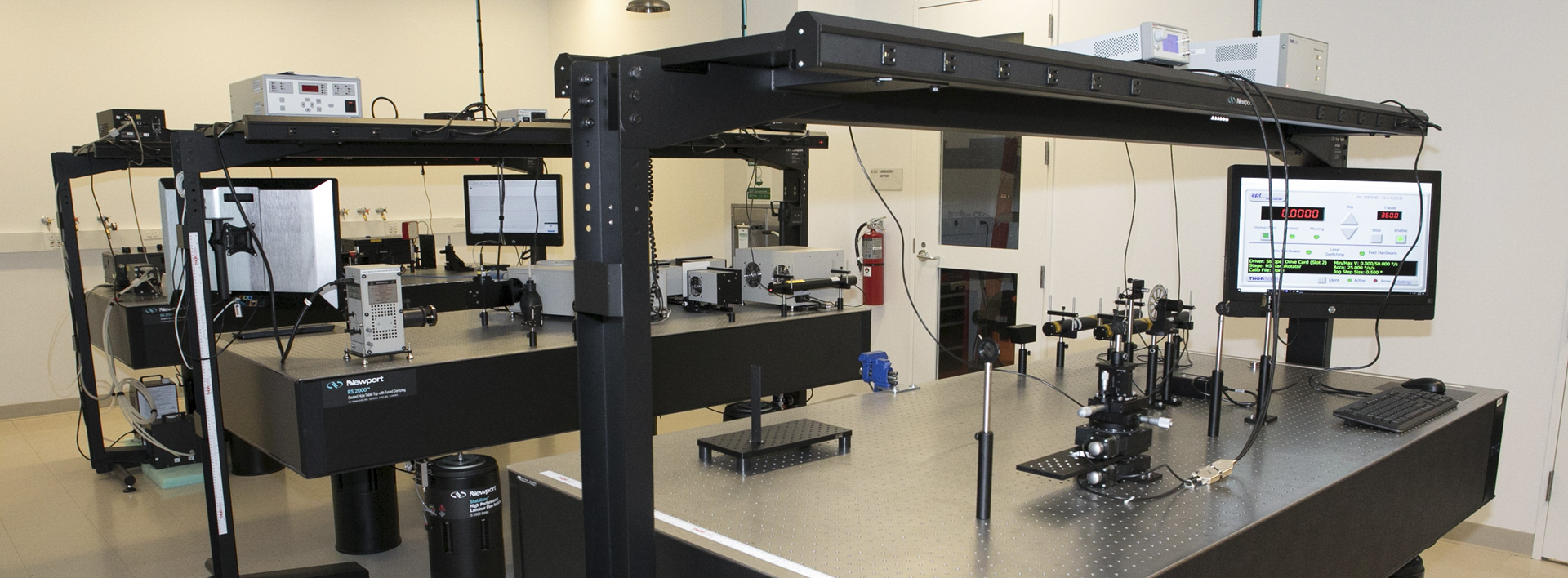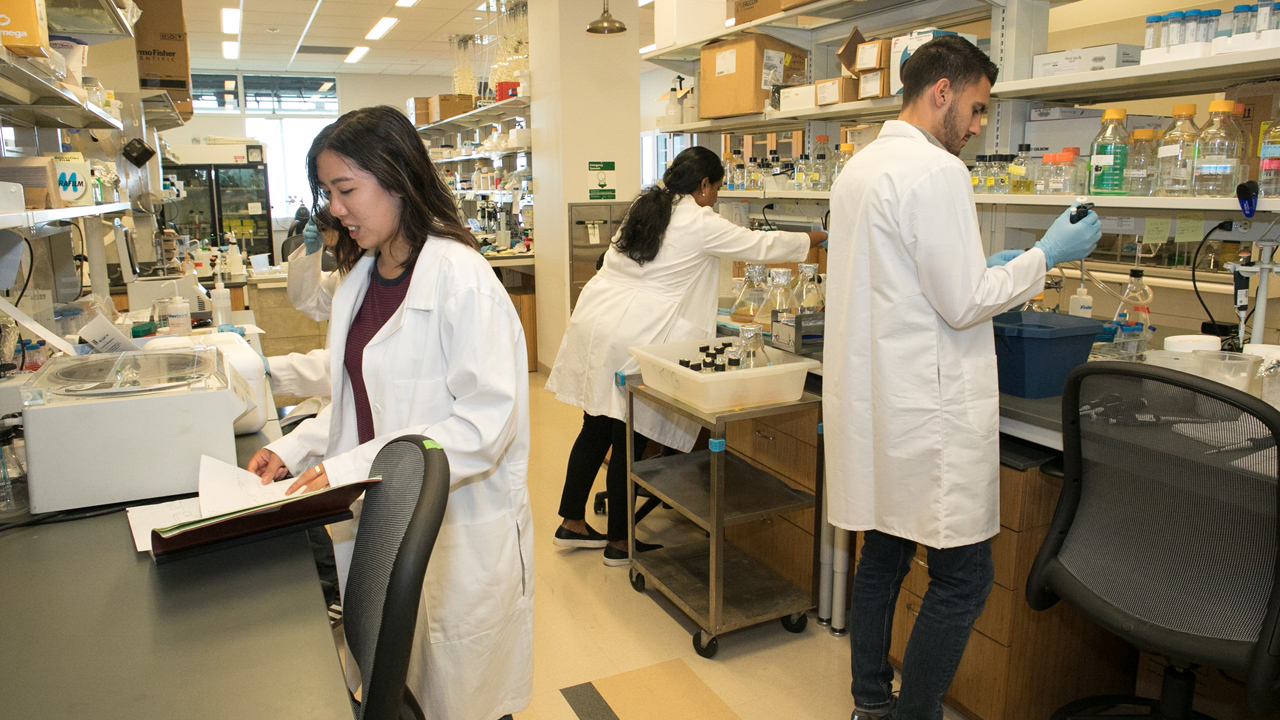
The ASRC’s collaborative model will enable researchers to execute state-of-the-art, interdisciplinary, convergence research that shatters the boundaries of traditional disciplines.
Researchers at the ASRC conduct research that spans spatial and temporal scales by 17 orders of magnitude—from centuries to picoseconds and from nanometers to kilometers. In its first five years, the ASRC has surpassed initial expectations and established itself as a leading interdisciplinary science institution with the explicit goal to promote cross-fertilization and to break down traditional silos between distinct disciplines. The five initiatives are diligently working to overcome barriers that would normally hinder integration across their diverse scientific disciplines and have established mechanisms to communicate with a new integrative scientific language. Through collaborative activities and discussions catalyzed within faculty meetings, building-wide events, and informal gatherings, faculty members, trainees, and staff are creating a new culture of collaborative research and are formulating concrete plans and projects dedicated to interdisciplinary research. A prime example of the ASRC’s success is the recent establishment of the Center for Advanced Technology in Sensors for Exploration of Natural Systems and Environments, funded by Empire State Development and involving participation from all five initiatives.
Objectives
To further integrate the strengths emerging from each scientific discipline and transform these into a coherent program of interdisciplinary research, the ASRC will:
- Identify scientific challenges whose solutions require interdisciplinary approaches and will have significant societal impact, for example, development of tools to analyze soil greenhouse gas remediation; design of novel sustainable energy sources and quantum computers; study of climate adaptation, environmental protection, and the interaction of the environment with brain, gut, and immune systems; and creation of novel diagnostic sensors and tools for neurological and mental health disorders and cancer.
- Create appropriate vehicles to accelerate interdisciplinary research in identified areas, potentially modeled after the successful launch of the Center for Advanced Technology focused on advancing communication and sensing technologies that address critical needs in biomedical and environmental sciences.
- Design and develop new scientific instruments, interfaces, and methods to address identified interdisciplinary research needs.
- Further develop and implement events and activities that explicitly promote and nurture collaborations across floors and labs within the ASRC as well as with CUNY collaborators, creating a meeting ground for innovative discussions on interdisciplinary research and a University-wide resource for the exchange of scientific information.
- Augment CUNY’s graduate and undergraduate programs through the creation of interdisciplinary research training curricula to support the next generation of interdisciplinary scientists and promote STEM education.
- Create opportunities to attract and support talented postdoctoral fellows interested in interdisciplinary work by creating fellowship programs funded via grants and/or philanthropic support.
- Engage with the local community to inspire and promote interdisciplinary science through public engagement and educational events that provide information about how interdisciplinary science seeks to improve human, societal, and environmental well-being.
- Promote the ASRC in the philanthropic and venture capital/business communities to grow a unique fundraising capacity by highlighting the importance and promise of interdisciplinary science.


Implementation Plan
The ASRC is well positioned to establish unique centers of scientific excellence that leverage its strengths across multiple disciplines within the center as well as across CUNY. In its next five-year phase of development, the ASRC will identify and pursue the next “big” interdisciplinary ideas that build on these strengths and link scientific research, education, and societal impact. Working with colleagues in The Graduate Center and beyond, the ASRC will create new virtual centers not bound by geography and of scientific excellence at these strategic intersections.
These virtual centers will coordinate scientific efforts to maximize the impact of interdisciplinary research that, for example, unites molecular and cellular technologies with global-scale approaches. In particular, the ASRC brings together the ideal combination of researchers to study living materials with nanoscale and photonic functionalities with the goal of establishing links between environmental effects, behavior, and disease. Working together, researchers will have the potential to impact the development of functional biomaterials for health and environmental sensing, molecular switches to modulate environmental effects on genetic material, and strategies to address competing energy, environmental, and natural resource demands.
To excel in this area, ASRC leadership will develop effective solutions to reduce potential barriers to its continued success and growth. Among these:
It is critical to identify the right balance for ASRC faculty members to allocate their time and effort between building and retaining excellence in their relative fields of study and promoting and conducting innovative interdisciplinary research. Given the combination of disciplines at the ASRC, these new research programs will be quite unique and, in terms of funding and successful outcomes, will often be high risk.
The ASRC houses a number of formal and informal collaboration spaces that encourage collaboration and interaction among its researchers and visiting scientists. The ASRC Café offers a space for relaxed and informal, but regular, daily interactions across the community, including staff, students, and faculty. And it can be even better used to foster spontaneous and diverse conversations and exchanges around ideas that live among the labs and groups distributed across the five floors. ASRC conference rooms will also be equipped to support an increased need for teleconferencing to connect interdisciplinary collaborators from other CUNY campuses.
A number of federal funding opportunities are positioned to support collaborative and interdisciplinary research. The National Institutes of Health supports a variety of center grants, the Department of Defense sponsors the Multidisciplinary University Research Initiative program, and the National Science Foundation funds interdisciplinary science and technology centers, to name a few. To become competitive for these significant awards, the ASRC will need to identify mechanisms to support the initial stages of interdisciplinary collaborations and collection of preliminary data. A combination of internal and nonfederal opportunities will be pursued.
The ASRC hosts state-of-the-art instrumentation and infrastructure to support world-class interdisciplinary scientific research. To remain at the forefront, the center will need to continually evaluate the changing needs of the community it supports at the ASRC and throughout CUNY. While there will be a need for new instruments and updated facilities, the center can also identify ways to repurpose existing components for new, transdisciplinary research by expanding their design limits to address multiscale, interdisciplinary research problems. Recently, the directors of the Epigenetics and Mass Spectrometry (MS) facilities recognized the need and their ability to join forces to create a Matrix-Assisted Laser Desorption Ionization (MALDI)-MS Imaging Facility using their combined expertise and instrumentation. This new core facility allows for label-free in situ profiling of proteins, lipids, metabolites, and small molecules.
World-class interdisciplinary research also requires a workforce that is trained to understand its particular demands and challenges. In partnership with existing graduate programs, the ASRC will spearhead the creation of new interdisciplinary programs for graduate education that will reflect these needs, expand the opportunities for CUNY students, and prepare them for unique career paths. These new programs will enable students and other researchers to understand a common scientific (technical) language, recognize and evaluate research outside traditional field boundaries, and establish familiarity with diverse methods and tools in order to apply them in interdisciplinary approaches. They will also include connections to real-world applications and, through partnerships and internships, exposure to career paths within and outside academia. These programs will include doctoral students working at the ASRC and across CUNY, thereby stimulating research across the University. Undergraduate and master’s students can also benefit from these new educational programs by participating in the programs’ events, professional development opportunities, and courses as well as by engaging in interdisciplinary research at the ASRC. Faculty have already begun to build the foundations of these programs. For example, two faculty co-taught a course that combines environmental sciences and chemistry that, among other things, guides students in understanding their interactions in real-life challenges, such as the impacts of nanoplastics in the air and oceans.
Progress will be accelerated by securing funding for outstanding young trainees dedicated to interdisciplinary studies. There is a need to generate dedicated funds to support scholarships for doctoral and postdoctoral fellows to work on interdisciplinary research, which is not traditionally supported by conventional funding sources.
We want to hear from you!
Send us your comments or questions on the 2020-2024 Strategic Plan.

